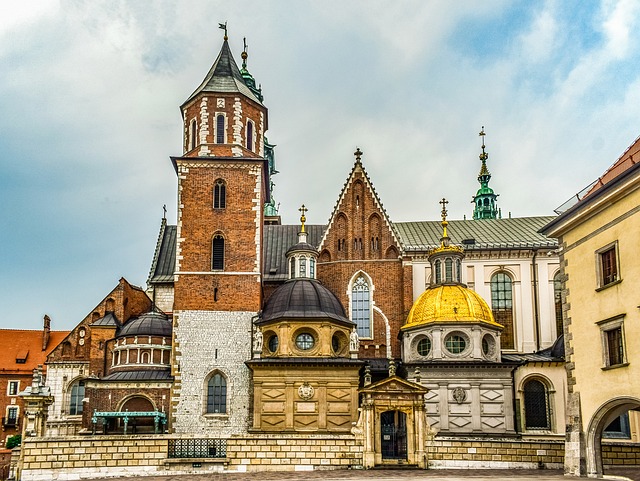Wawel Cathedral is worth a visit

Of all the sights in Krakow, which was the capital of Poland from 1039 to 1795, the Wawel Cathedral, located on Wawel Hill, is certainly worth a visit. It is a tourist treat not only for lovers of religious buildings, but also a huge piece of Polish history. You can find a number of monuments that are unique to the place. Over the centuries, the cathedral has been rebuilt several times.
History of Wawel Cathedral
The ceremonial consecration of Wawel Cathedral took place on March 28, 1364. The event was attended by King Casimir the Great and Archbishop of Gniezno Jaroslaw of Skotniki. Earlier there was a church on the site, which was expanded after the bishopric was established in Cracow. Construction of the Gothic cathedral began in 1320, and its founder was Władysław I Łokietek. He was also the first of the Polish rulers to be laid to rest in the crypts located there. The Wawel Cathedral building has witnessed the reigns of as many as 17 Polish kings.
Architectural monuments of Cracow – Wawel Cathedral
Wawel Cathedral, located on Wawel Hill, is a place of worship, a necropolis, but also a magnificent and valuable piece of Gothic architecture. You can admire the intricate marble tombstones, paintings and stained glass windows. The tombstone of Casimir IV Jagiellon was made by Wit Stwosz himself. Visitors can admire not only the tombs of kings, but also of the most prominent Polish historical figures of the 19th and 20th centuries. The cathedral contains the burials of Prince Jozef Poniatowski, Marshal Jozef Pilsudski or General Wladyslaw Sikorski. In addition to people of merit in Polish statehood, poets and artists such as Adam Mickiewicz and Juliusz Słowacki are also buried there. The Crown Treasury houses a famous historical relic – the Szczerbiec sword. On the bell tower you can admire the “Sigismund” bell.
Interesting facts about Wawel Cathedral
In the basement of Wawel Cathedral is the Crown Treasury, where the most valuable Polish relics are kept. These include not only the sword Szczerbiec, but also St. Maurice’s spear or a thousand-year-old glass chalice. Visitors can admire the frescoes, whose author is Jan Matejka himself. The paintings depict images of Polish rulers and key historical figures in an allegorical manner. The cathedral is one of the most important sites of Polish statehood and national identity.
Authors whose works can be found in Wawel Cathedral and its vaults:
- Giovanni Padovano
- Santi Gucci
- Wit Stwosz
- Jan Michalowicz
- Jan Matejko
- Christian Bierpfaff
Brick and white limestone were used to build the cathedral. One of the landmarks is the Sigismund Tower, which houses the aforementioned bell. A series of buildings adjoin the cathedral on the north side: the treasury, library and chapter house. Inside there is a short nave and as many as 18 different chapels. Inside the nave is the tombstone of King Wladyslaw II Jagiello. It was made of dark Hungarian marble. Inside the cathedral there are also two side aisles – north and south.
